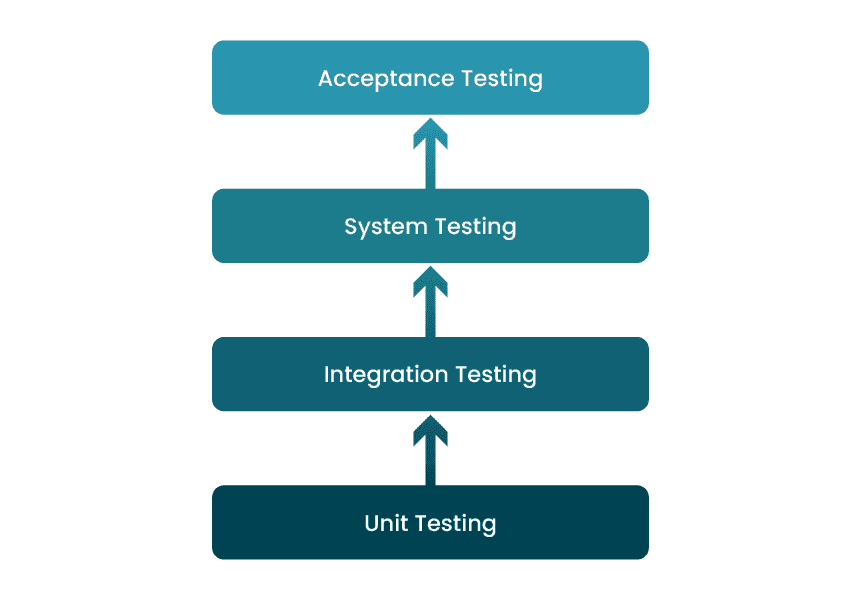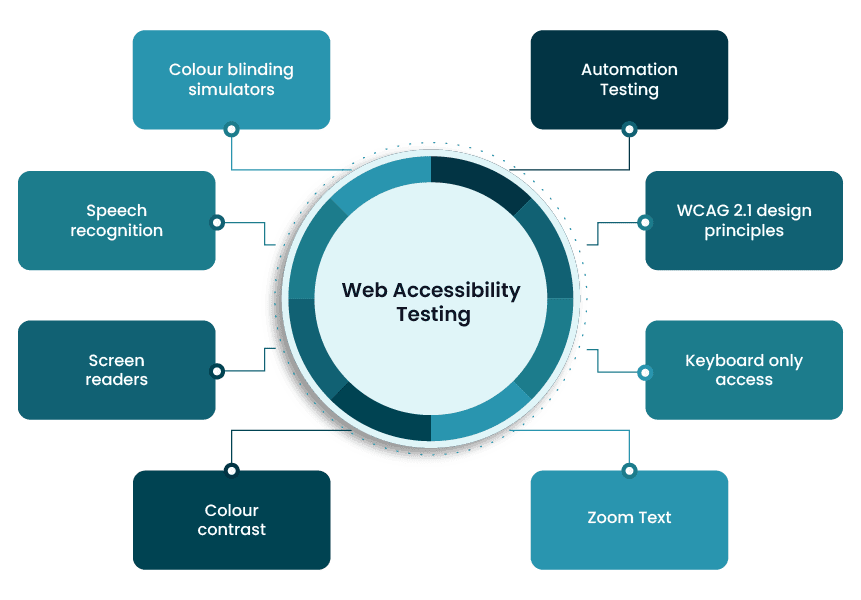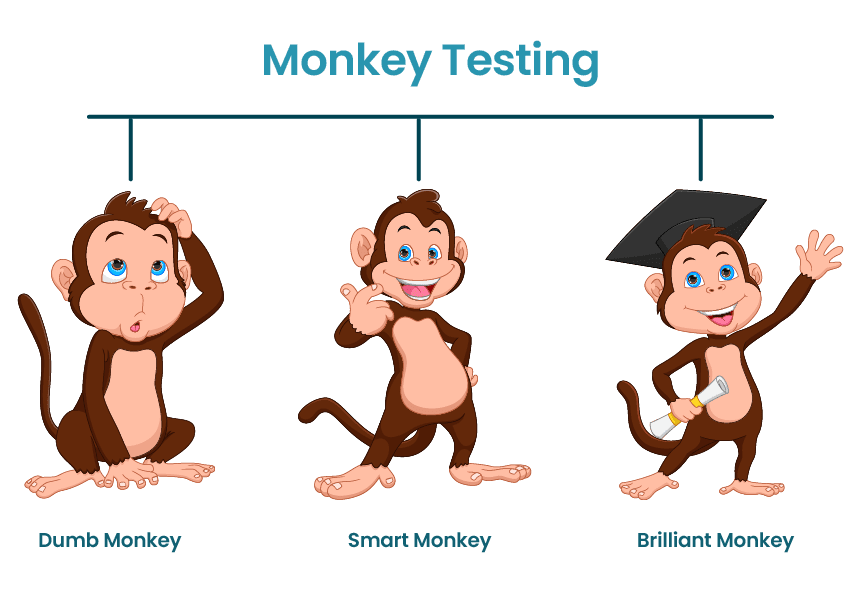Software testing plays a vital role in achieving the goal that software meets specifications and delivers high-quality user experiences.
Automated testing is gaining importance. The global software testing market is expected to reach USD 50.4 billion by 2025. It’s essential to understand the different types of software testing and how they can help you ensure that your software meets its objectives.

Software testing is the process of evaluating and verifying the functionality, performance, and quality of a software application. It is a critical aspect of the software development lifecycle (SDLC). It helps identify defects and prevents issues from occurring in production.
With the rise of Software as a Service (SaaS) solutions, many organizations are now shifting from on-premises software to Cloud-based solutions. This shift presents unique challenges for testing as SaaS solutions require rigorous testing of integration points, data flow, and security. It ensures the solution is working optimally. Additionally, the nature of Cloud-based environments is dynamic. Requires testing to be continuous to ensure that the software stays functional as updates are made.
Types of software testing
What are the different types of software testing in software, and how can they help you ensure the quality of your software?
Unit Testing
A type of testing that involves testing individual units or components of the software. It helps in identifying and fixing defects at an early stage.
Integration Testing
Integration Testing is a type of testing that involves testing the interaction between different modules or components of the software. It helps in identifying defects that may arise due to the integration of various components.
System Testing
A type of testing that involves testing the entire system as a whole. It helps in identifying defects that may arise due to the interaction between various components.

Sanity Testing
Sanity testing checks if a system is working properly after minor changes. It helps catch functional, performance, and usability different types of bugs in software testing early in the development process.
Acceptance Testing
A type of testing that involves testing the software against predefined acceptance criteria. It helps in ensuring that the software meets the requirements of the stakeholders.
Regression Testing
Regression Testing, a type of testing that involves testing the software after making changes or modifications to ensure that existing functionalities are not affected.
Performance Testing
Performance testing is a type of software testing. It is used to evaluate the system’s performance under different conditions. The goal is to identify different types of defects in software testing. These defects can include memory leaks, bottlenecks, and scalability issues. The main objective of performance testing is to ensure that the software meets the performance requirements.
Load Testing
A type of performance testing that involves testing the software’s performance under a heavy load to identify the system’s breaking point.
Stress Testing
Stress testing is one of the most commonly used type of software testing. A type of performance testing that involves testing the software’s performance under extreme conditions to identify the system’s behavior.
Security Testing
A type of testing that involves testing the software’s security features to identify vulnerabilities and ensure the software’s security.
Usability Testing
Usability testing is a type of testing in software testing. It is used to test the software’s usability and ease of use. Alike different types of testing in software testing the goal is to ensure that the software is user-friendly. This type of testing includes enhancing the user experience and increasing user satisfaction.
White-Box Testing
A type of testing that involves testing the internal workings of the software application, including its code and architecture. An example would be testing a web application’s backend logic and database.
Exploratory Testing
A type of testing that involves exploring the software application to identify defects and other issues without following a predefined test plan. An example would be exploring a web application’s user interface to identify any unexpected behavior or defects.
Fuzz Testing
A type of testing that involves testing the software application with random or unexpected inputs to identify how it responds to unexpected data. An example would be testing a web application’s input fields with random strings or numbers.
Globalization Testing
A type of testing that focuses on testing the software application’s ability to function across different cultures, languages, and regions. An example would be testing a web application’s user interface with different languages and character sets.
Mutation Testing
A type of testing that involves introducing small changes to the software application’s code to identify how well the testing suite can detect and report defects. An example would be introducing a typo or syntax error in the code to see if the testing suite can detect it.
Alpha Testing
A type of testing that involves testing the software in a simulated or controlled environment before it is released to the public. It helps in identifying defects and making necessary changes before the public release.
Beta Testing
A type of testing that involves testing the software in a real-world environment by a group of end-users before its release to the public. It helps in identifying defects and getting feedback from real users.
A/B Testing
A type of testing that involves comparing two versions of the software to determine which one performs better. It helps in improving the software’s features and functionality.
Localization Testing
A type of testing that involves testing the software’s compatibility with different languages, cultures, and regions. It helps in ensuring that the software is suitable for different markets.
Accessibility Testing
A type of testing that involves testing the software’s accessibility features to ensure that it is accessible to users with disabilities.

Compatibility Testing
A type of testing that involves testing the software’s compatibility with different hardware, software, and network configurations. It helps in ensuring that the software works seamlessly on different platforms.
Conformance Testing
A type of testing that involves testing the software’s conformance to industry standards and regulations. It helps in ensuring that the software meets the required standards.
User Acceptance Testing
UAT involves testing the software by end-users to determine whether it meets their requirements and expectations. It helps in ensuring that the software is user-friendly and meets the user’s needs.
Functional Testing
Functional testing evaluates the software’s functionalities to ensure they meet the specified requirements. It checks each function of the software application by providing appropriate input and verifying the output against the functional requirements.
Black Box Testing
Black box testing focuses on testing the software’s functionality without knowing its internal code structure. Testers provide inputs and examine the outputs without considering how the application processes the inputs.

Non-Functional Testing
Non-functional testing assesses the non-functional aspects of the software, such as performance, usability, reliability, and security. It ensures the software meets non-functional requirements and performs well under various conditions.
Smoke Testing
Smoke testing involves performing basic tests to ensure that the major functionalities of the software work correctly. It is often performed after a new build or version is released to check if it is stable enough for further testing.

Scalability Testing
Scalability testing evaluates the software’s ability to scale up or down in response to an increase or decrease in user load or other factors. It helps determine the application’s capacity to handle growth.
Ad Hoc Testing
Ad hoc testing is an informal and unstructured type of testing where testers try to find defects by randomly exploring the application. It does not follow any predefined test cases or plans.
Grey Box Testing
Grey box testing combines both black box and white box testing approaches. Testers have partial knowledge of the internal workings of the software and use this knowledge to design test cases and test the application.
Monkey Testing
Monkey testing involves providing random inputs to the software to see if it can handle unexpected or unusual inputs without crashing. It helps identify potential weaknesses and robustness issues.

Achieve Your Testing Goals
Whether you rely on manual testing or automated testing, understanding the various types of software testing is crucial to ensure your software meets its objectives. If you’re looking for an automated testing platform to streamline your testing efforts, look no further than Opkey.
By utilizing a comprehensive approach that includes various types of software testing, organizations can ensure their software is reliable, secure, and user-friendly, ultimately achieving high-quality user experiences.
